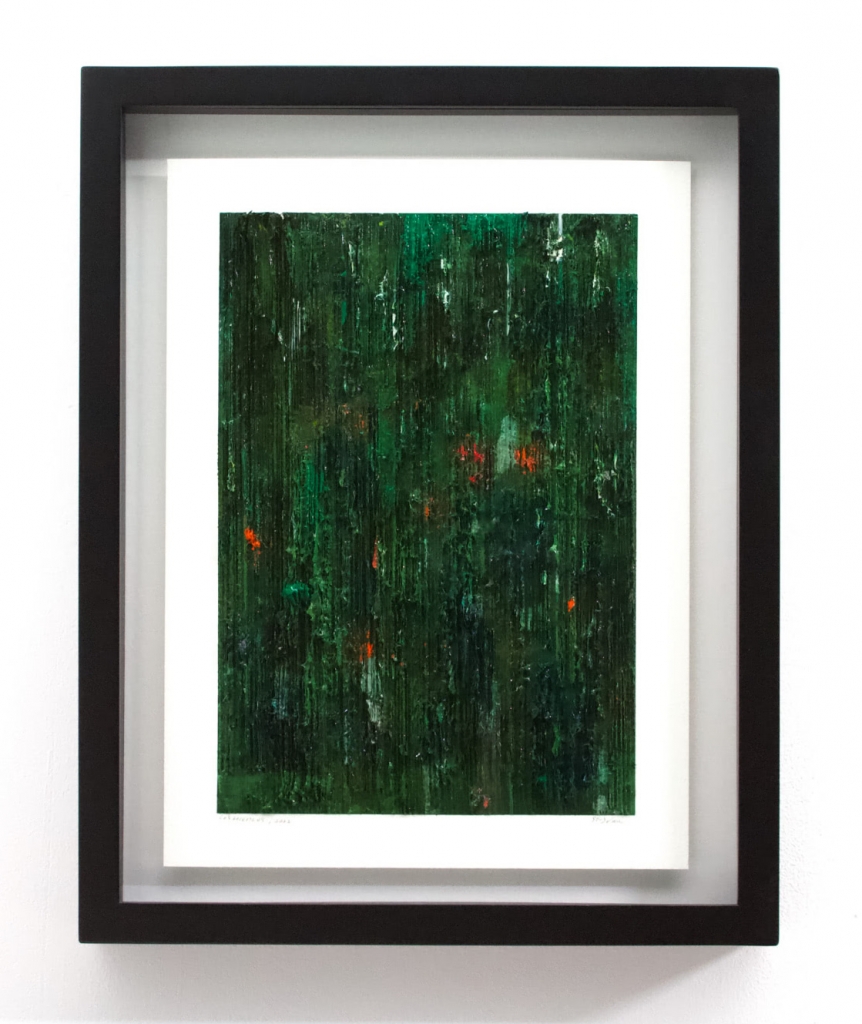Lieux Sauvages by Louis-Bernard St-Jean at Espace 230 28 October – 17 December
Louis-Bernard St-Jean’s latest solo exhibition, Lieux Sauvages, at his studio-gallery, Espace 230, is his most current exploration of colour and texture using oil paint on panels and paper. These works are inspired by his ventures into the Quebec wilds, in places such as the Laurentians, in Lanaudière, near the Missisquoi River, and the Saguenay, where he hiked and paddled, and of his dreams to visit tropical climes and lush rainforests. This series reflects the peace and quiet of nature, where the artist finds a safe space away from the bustle of the city amongst the wildlife and the waters.
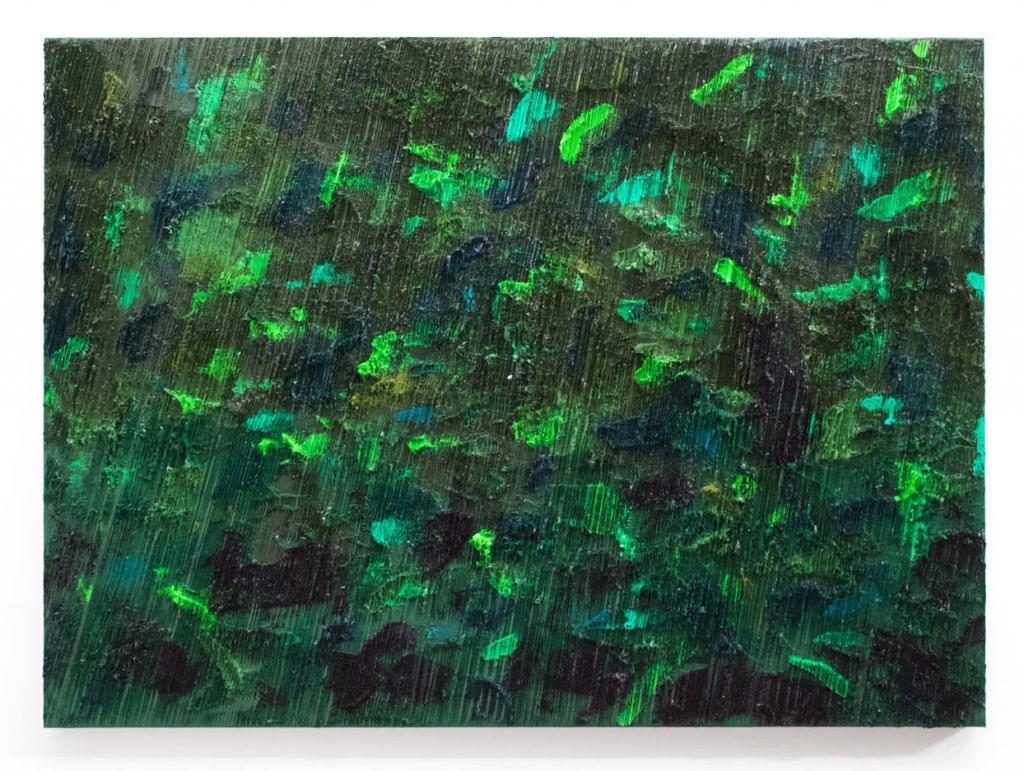
I’ve watched St-Jean’s art career for the past several years with interest, and it is clear that he is a devoted painter. His technique of using palette knives to create abstract compositions has developed significantly and steadily over the years. Born in Montreal in 1979, St-Jean’s higher education was in other fields, he is a self-taught artist. Still, don’t mistake him for a parvenu, painting is in his blood. Going back several generations, his ancestors painted the canvases that adorn churches and cathedrals in and around Quebec City. His parents were artists, collectors, and art dealers, and to say St-Jean grew up around art would be a vast understatement. He was raised around some of the best Canadian and Quebec art that was being made at the time, and which esteemed highly today. Unaware that he would later become an artist himself, painting was steeped into his subconscious. The entire family home was filled with works by European greats such as Salvador Dali, Joan Miró, Automatistes such as Jean-Paul Riopelle, Paul-Émile Borduas, Marcelle Ferron, Marcel Barbeau. These works were beside Abstract Expressionist Joan Mitchell, lyrical abstractions of McEwen, Quebec landscape painters of the 20th century such as Marc-Aurèle Fortin, Stanley Cosgrove, Plasticien Fernand Toupin, the Group of Seven and many others. St-Jean started painting in his early 30s when he wanted art for the walls in his home, but nothing suited his aesthetic sensibilities and fondness for textured paintings. Painting soon took over his life, and he quit his mainstream career in 2015 to be a full-time artist.
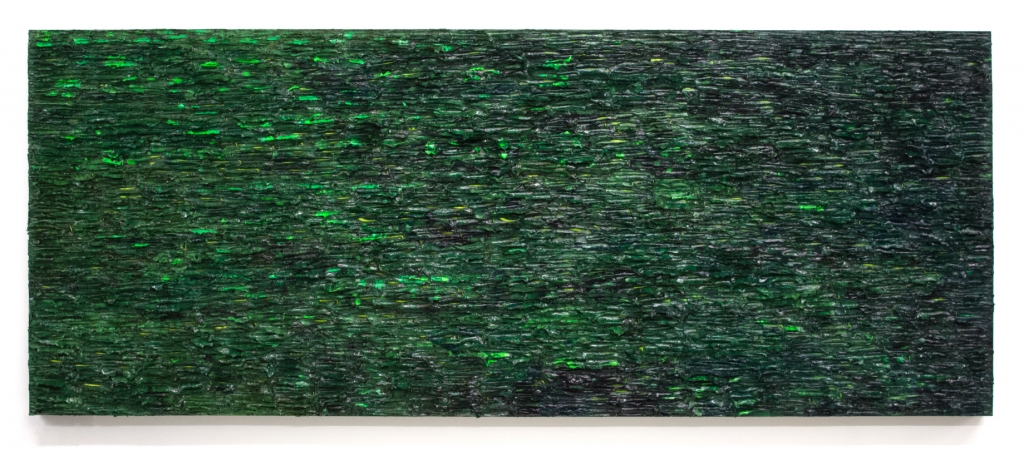
Being surrounded by such great art from Quebec and beyond, St-Jean was significantly impacted by the culture of painting of that time, which includes, of course, the ethos of the Automatistes, as well as the ideals of the Plasticiens who came after. Both movements influence his work, though it is more on an intuitive or subconscious level, fitting for the work of someone influenced by the Automatistes. The Montreal-based Automatistes formed an artistic movement that shunned religion and institutional education and sought to tap into the unconscious mind. The group’s members extolled the virtues of creating without pre-planning. St-Jean pulls on Automatiste styles of painting with his penchant for using the palette knife and other tools, shunning the traditional brush thusfar. He is an experimenter who pushes how far painting can go, building up surfaces with significant layers of oil paint, which create challenges to overcome, but he seems to enjoy pushing himself and his works to their limit, even creating successful works of thick impasto oil paint on paper, a notoriously delicate and fragile medium. With a keen sense of craftsmanship and attention to detail, attention to surface qualities of form, light, and colour, St-Jean also has a kinship with the Plasticiens which were one of the only locally-driven art movements to originate in Quebec. Responding to the Automatiste’s pursuits of intuitive creation, the Plasticiens sought to focus on form, structure, and the harmonies that can be obtained within a set of self-created rules. The best artists draw on both intuition and form to create works that stand the test of time and move beyond trends and fads, which St-Jean has accomplished in these works.
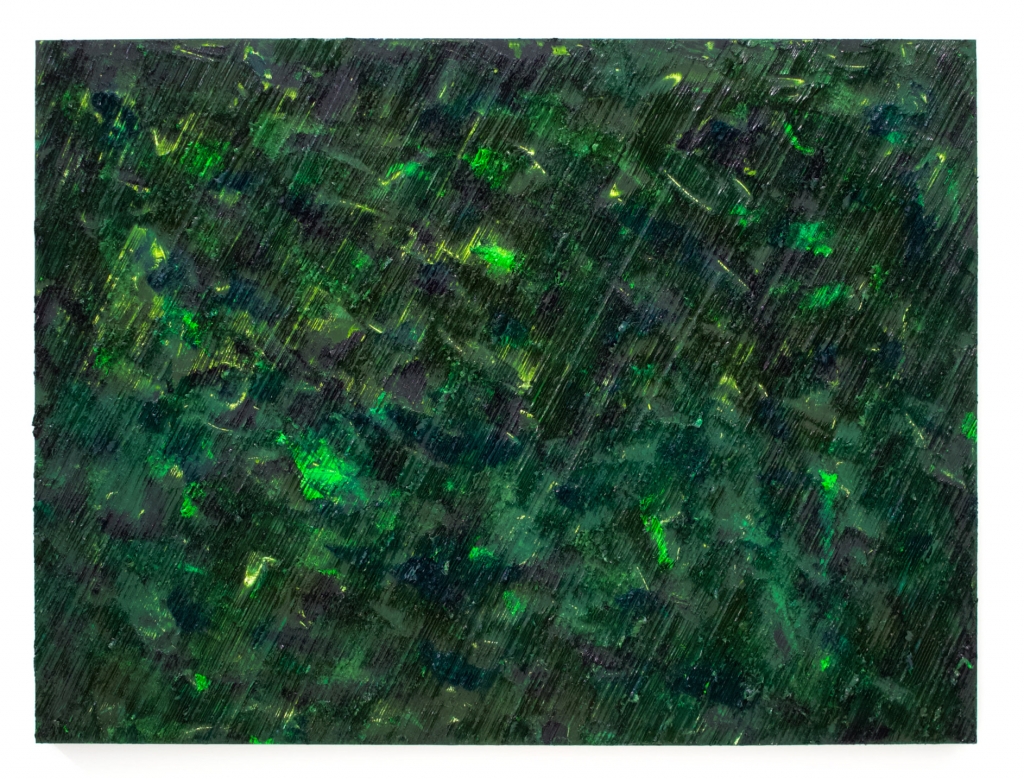
We need to remember the words of the Automatistes in their groundbreaking manifesto, Refus Global, that changed the artistic and philosophical nature of Quebec when considering the current state of contemporary art:
“To break definitively with all conventions of society and its utilitarian spirit! We refuse to live knowingly at less than our spiritual and physical potential; refuse to close our eyes to the vices and confidence tricks perpetuated in the guise of learning, favour, or gratitude; refuse to be ghettoed in an ivory tower, well-fortified but too easy to ignore; refuse to remain silent — do with us what you will, but you shall hear us; refuse to make a deal with la gloire and its attendant honours: stigmata of malice, unawareness or servility; refuse to serve and to be used for such ends; refuse all intention, evil weapon of reason — down with them, to second place!…Make way for magic! Make way for objective mysteries! Make way for love! Make way for necessities!”
In today’s art world, one is expected to have a master’s degree in painting from the right schools, exhibitions at the right institutions, and to be represented by the right galleries in order to earn respect. While those achievements have real value and are coveted by artists today because of the access and success they confer, let us not forget the worlds of our influential forebears, the Automatistes who rejected the dominance of institutions as crippling to independent thought and creation. Let us celebrate artists like St-Jean who are dedicated enough to their path as an painter to forge their own way when necessary. St-Jean took the initiative to create his own space to exhibit his work at his studio, turning it into a quasi-gallery where he sometimes brings in other artists to exhibit. Let us bring these two solitudes—the institutional and the independent—together in collaboration, support, and respect.
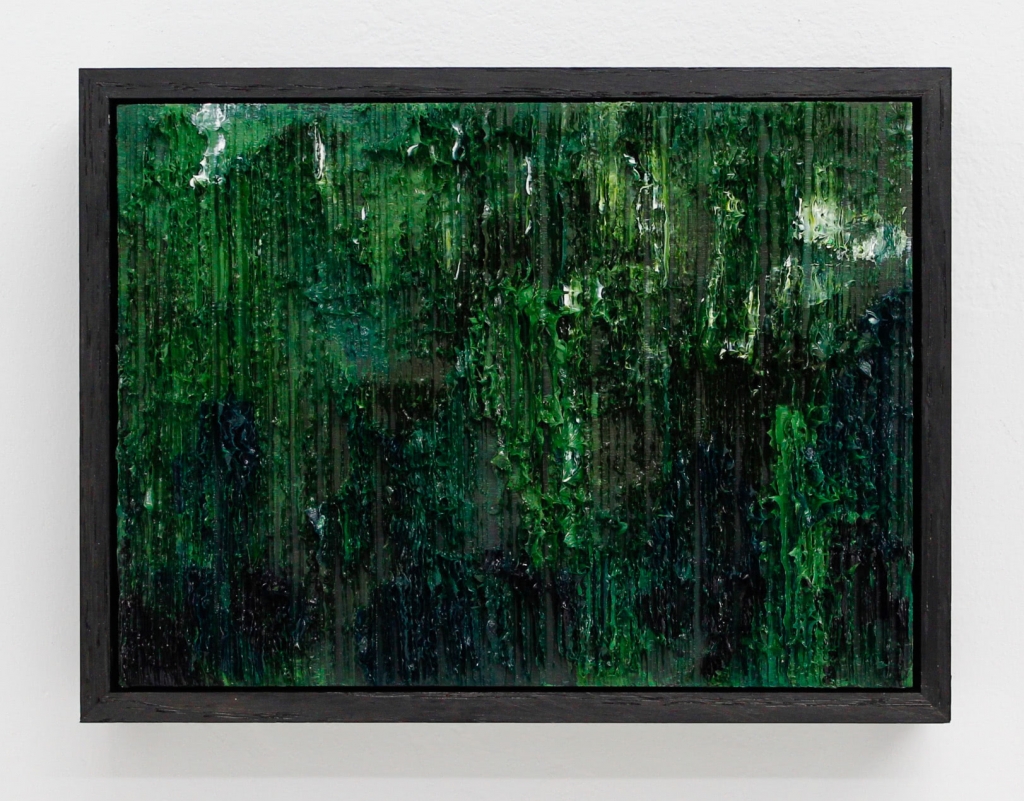
Louis-Bernard St-Jean is known for his dramatically textured oil paintings, which are not simply intuitively placed impasto, but rather dense layers of oil paint in multiple colours which are chopped up using the palette knife or other tools to create unique effects. Lieux Sauvages continues these pursuits. St-Jean’s artistic concerns are to stretch the limits of the medium, of the capacity of what his hand can do, what paint can do, and what can be done with various tools without using a brush. He works in large format to very tiny, from heavy works of deeply layered oil paint on wooden panels to fragile, diminutive pieces on Arches paper. As a painter, he works in tight series but is continually moving forward incrementally and experimenting. The signature qualities of his works include precision, boldness, delicacy, sensitivity, craftsmanship, and attention to detail. After completing his last monochrome series in black and white, St-Jean turned to phthalate greens, green earth, sap green, olive green, viridian, and other pigments to show the varied tones and hues that nature gives us. Typically working in vertical or diagonal lines which cut up the composition of the canvas, we are given shimmering effects as the glistening oil catches the light. With their diagonal or vertical cuts into the surface of the painting we receive an impression of weather, of rain or wind. The way the light changes due to alterations in weather is reminiscent of the way the light shifts when you as the moving spectator view these paintings as you walk by them.
Les voûtes tranquilles, or “tranquil vaults”, presents thick greens shown in the gallery space as a vertical composition, giving a sense of the vaulted appearance of the spruce forest, which perhaps inspired the architects of cathedrals of Europe that later came to Quebec. When viewed horizontally, as it can also be presented, this painting is a bit like a dark and brooding Monet, a pond in the middle of a forest at twilight, reflections of the wood on the water.
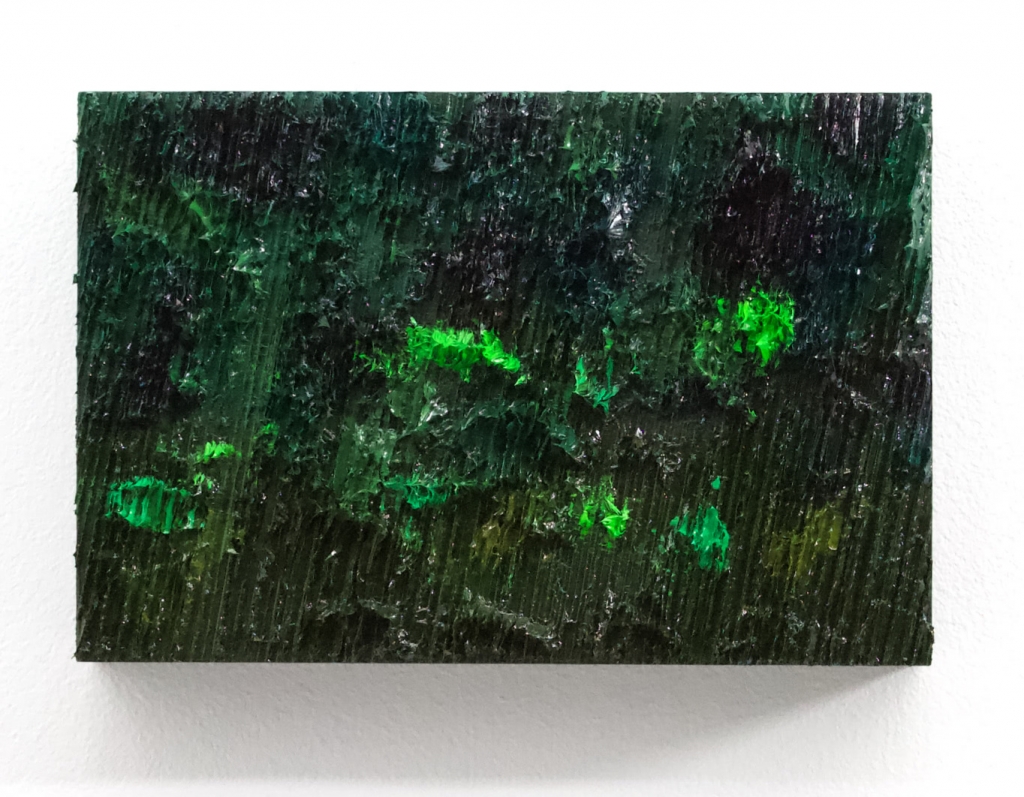
Rêveries équatoriales shows us vertical cuts that, in context of the title, make me think of a violent monsoon in a deep rainforest, where bits of light peek through, illuminating the rich and dense plant life. The title of Vous êtes ici, or “you are here”, plays off the maps we see in parks, when we find ourselves in the moment, located perhaps in a place we wish to be or do not wish to be. A small canvas, it reminds us how small we may feel, like a little point on a map in a vast national park ready to be explored. Les hibiscus, beyond the greens of this series, contains touches of red and white showing under from the oil paper.
One of the best in this series, Morphologie des plantes, seems to pull on Automatiste and Abstract Expressionist influences. We have the sense of movement, texture, and colour which emerge from the land that St-Jean and his ancestors dwelled on through so many generations. The movement of the light against dark contrasts in this painting give a sense spontaneity, a work full of life and the joy of creating. The way the strokes of lemony electric green strike the eye are similar to the way light, dancing in a constant state of movement and change, penetrates the canopy of a forest to reach the humble moss and plant life below.
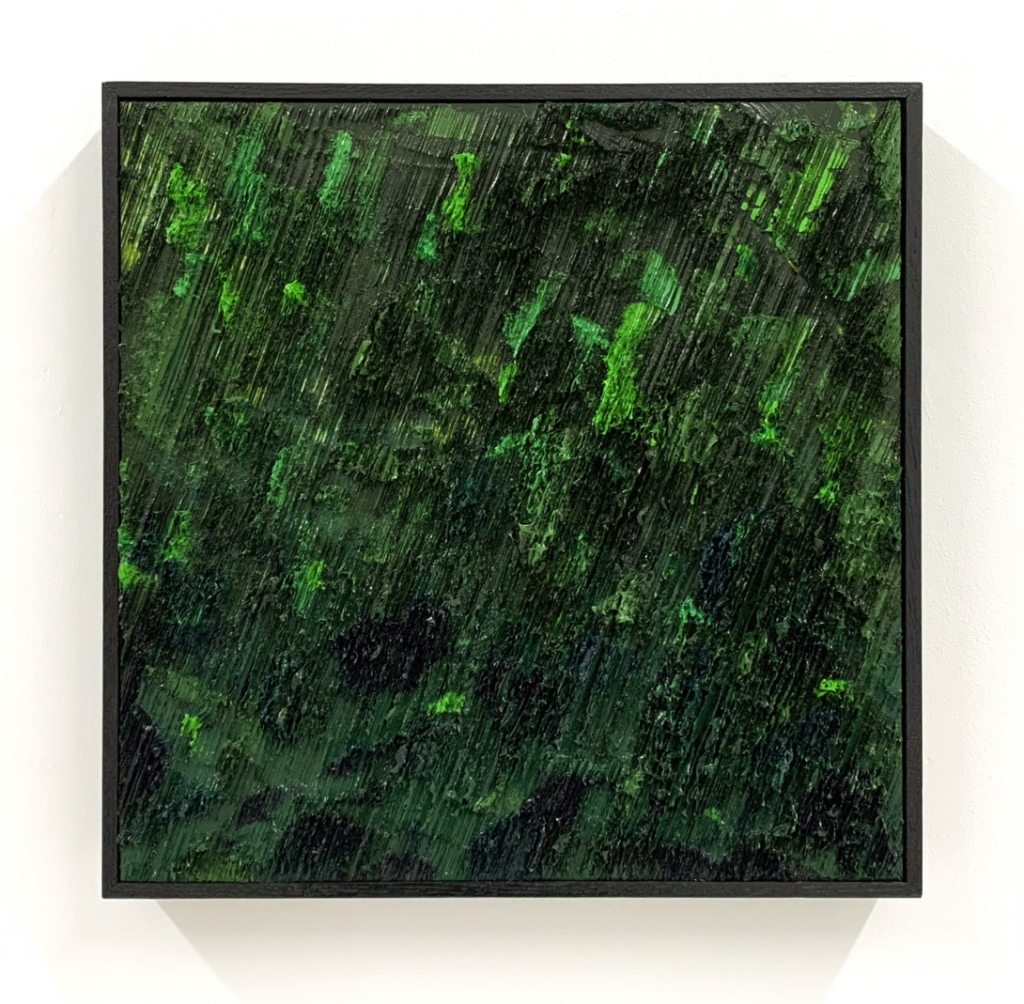
In another intimately-sized painting, Asclépiades, or “milkweed”, hints of podlike forms in a grassy landscape are closely regarded. We see touches of white, a sense of milkweed fibres which are impossibly soft and pure feeling. Écoumène was inspired by a trip to the Jardin d’Ecoumène in Launadière; this painting could be a topographical perspective of a verdant landscape, or at the same time, the opposite—a sense of an up-close view of the forest floor.
The works in Lieux Sauvages reflect the verte tendre that greets us in early spring on the mountaintops of the Laurentides, the deep greens of the dense canopies of the bush, the flashes of light through the leaves of a dark forest. I am reminded of the vastness that is Quebec and its complicated history, and the colonization of indigenous lands, where this territory was entirely once simply wild. I am also reminded of the long winters, which makes Canadians appreciate the green months even more. Of battles fought on and for these lands, and the people who return to nature here to seek peace and renewal. The spirit of the land spoke to St-Jean in these works, through his observations of various present moments, and they convey the sense of pleasure and peace with their strong colour, movement, and light.
